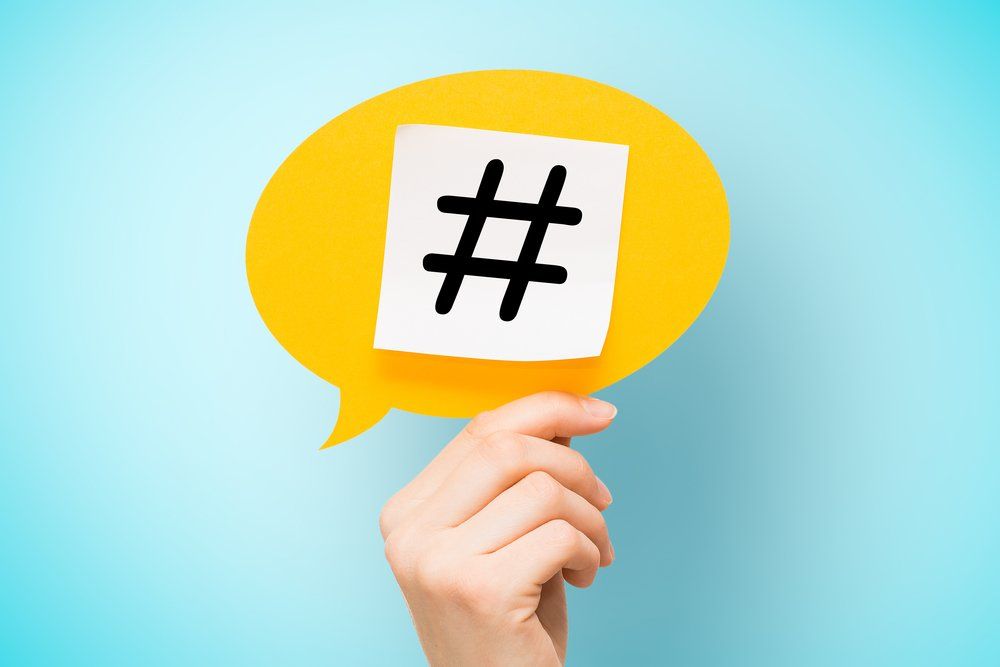A Guide to Effective and Powerful Hashtag Usage
A Guide to Effective and Powerful Hashtag Usage

We all know that hashtags are valuable to our social media strategies. However, are you certain that you’re using them effectively?
Even the most experienced social media marketer needs to audit their strategy from time to time. So, let’s revisit your hashtag strategy and ensure that it is as powerful as it can be.
Best practices change all the time so we consider it our duty to keep your social media marketing strategy up to date.
Why Hashtagging is Crucial
Hashtags serve many purposes when executed the right way. Benefits include:
- Increasing social followers
- Being part of a bigger conversation
- Can reach target audience
How Many Hashtags to Use For Each Social Post
While each social platform embraces hashtags, there are best practices for each channel. One of the most common mistakes we see is that marketers write a post with hashtags and publish it to all their social media channels. To make the most out of your hashtagging strategy, write a post specific for each platform and
this post can help with that.
The number one mistake we see is that people don’t optimize the amount of hashtags they use for each channel.
Taken from our experience, we have a rule of thumb for the number of hashtags to use on each social platform.
- Facebook: 1-2 hashtags
- LinkedIn: 2-3 hashtags
- Twitter: 1-2 hashtags
- Instagram: 10-11 hashtags
- TikTok: 4-5 hashtags
- Pinterest: 2-3 hashtags
Types of Hashtags
Brands that use a variety of hashtags in their posts have a better chance of seeing real results rather quickly. Let’s explore a few types of hashtags that you should be utilizing.
- Branded hashtags: These hashtags should represent your brand and help social media audiences find out more about your brand or campaign. Branded hashtags aren’t meant to help new audiences find your posts, rather, they give your brand a space that is just yours to access posts. You commonly see branded hashtags when running an influencer campaign, hosting a giveaway, and to track mentions of your brand.
- Broad hashtags: Broad hashtags are popular ones that your target consumers search for. They help relevant audiences find your social posts. Don’t be tempted by search volume to use hashtags that aren’t necessarily relevant to your brand.
- Niche hashtags: Niche hashtags have lower search volume than broad hashtags. However, they speak to a highly targeted audience. So, they might put your posts in front of fewer social media users but they will be in front of the RIGHT audience.
Alternating Hashtags
Not only do you want to alternate types of hashtags, you also want to alternate the actual hashtags that you use and not get too hung up on using the same ones. Some social platforms consider using the same hashtag too much to be SPAM.
Another reason we advocate for alternating hashtags is so that brands can experiment with different hashtags and use the ones that get the best results.
Where to Find Hashtag Ideas
There are a variety of tools and manual strategies that will help you keep your hashtagging fresh.
- Explore hashtags that your followers are using
- Identify hashtags influencers are using
- Analyze the hashtags your competitors are using
- Use Hashtagify.me
- Get hashtag suggestions from RiteTag
The “Don’ts” of Hashtagging
We’ve explored WHAT TO DO with your hashtagging strategy so let’s wrap it up with WHAT NOT TO DO when hashtagging.
Don’t rely too heavily on hashtags to get your content noticed--keep quality of content as your priority- Don’t always just use trending hashtags, they’re too competitive so implement a variety
- Don’t hashtag a bunch of words in your social posts as it’s hard to read
Do you have any hashtagging tips to add? We’d love to hear from you in the comments below!










